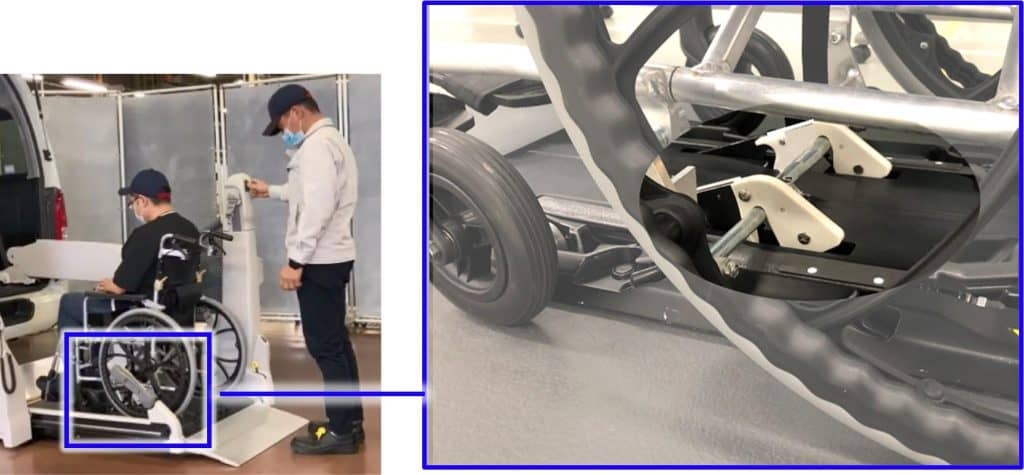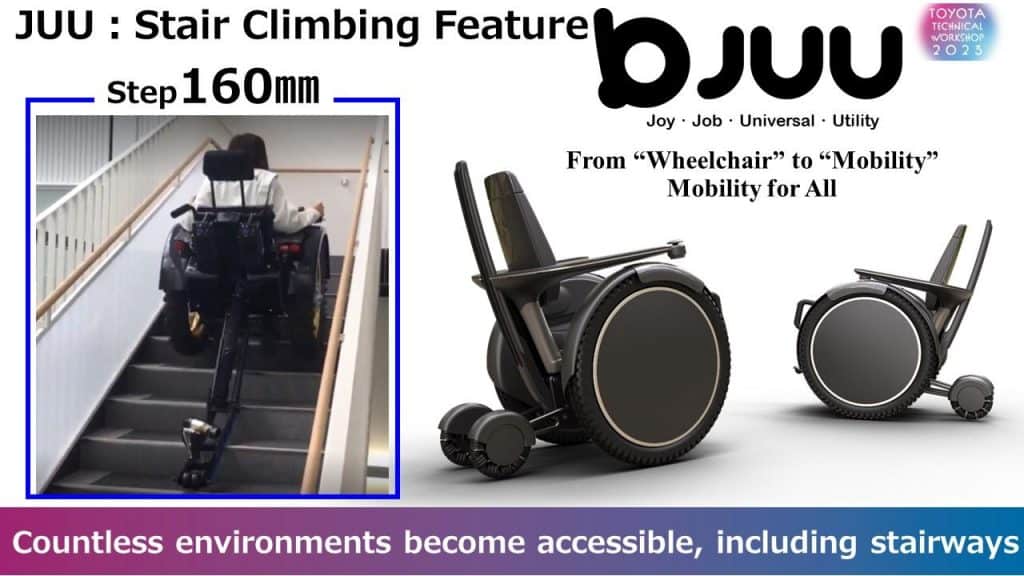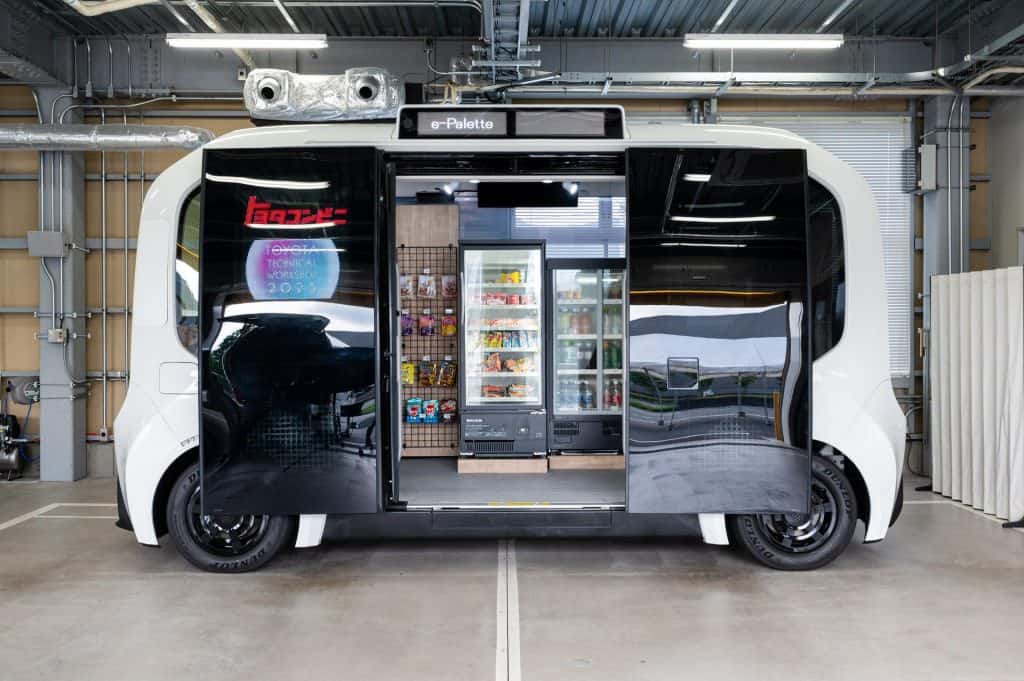Mobility for all. Behind this principle lies the belief—outlined in the October 2017 press release launching Toyota’s transformation into a mobility company—that “mobility goes beyond cars; it is about overcoming challenges and making dreams come true.”
So how is this vision taking shape? The second topic in our roundup of Toyota’s Technical Workshop is the company’s efforts to achieve mobility for all. At a time of growing diversity, we report on the vanguard of mobility development that “goes beyond cars.”
The freedom of stress-free wheelchair mobility
Toyota is developing a one-touch fastening device that offers wheelchair users greater freedom of mobility.
Together with other car, bus, and wheelchair manufacturers, the company is part of a consortium (established in April 2022) working to standardize the anchor bars mounted at the base of wheelchairs.
Now Toyota has come up with a one-touch fastening device for the vehicle side, which secures the anchor bar at the press of a button once the wheelchair is in position.

Conventionally, the anchoring method used on public buses and other vehicles requires the wheelchair user to move into a designated spot, where the driver secures them in place using a belt with three hooks.
Even for experienced drivers, this process takes around two minutes, during which the other passengers are kept waiting. Drawing attention in this way takes an emotional toll on wheelchair users.
The task is also taxing on drivers, who must squat down to attach the hooks. With Toyota’s one-touch device, anyone can easily and securely fasten a wheelchair by simply pressing a button.
Once in position, the wheelchair can be secured in two seconds, creating a more user-friendly mobility experience.
Toyota is looking to make the devices available for all manner of vehicles, from ships to airplanes, to ensure wheelchair users can enjoy the freedom of stress-free mobility.
Carmaking technologies make light work of uneven surfaces
The JUU is an electric wheelchair previously showcased at the 2022 International Home Care and Rehabilitation Exhibition. Its most significant feature is the ability to negotiate steps up to 16 cm tall (30 cm deep) while seated.

When climbing stairs, the JUU’s “tail” drops down from behind the backrest to support the wheelchair. This allows the user to ascend unassisted.
Similarly on the descent, the tail prevents the wheelchair from tipping over, maintaining a stable position as the JUU backs down the stairs.
For the wheelchair’s drive system, engineers used electric power steering motors normally found in cars. The torque they deliver improves safety by ensuring that the tires do not counter-rotate when ascending or descending.
The JUU is equipped with two drive systems—even if one should fail, the wheelchair can continue running on the backup system.
In the next-generation model, Toyota plans to utilize other car components, which are highly reliable while also offering cost advantages.
At the same time, the modern, stylish design was also created with the joy of mobility in mind.
The JUU opens up the possibility of visiting places, such as shrines and temples, that were previously out of reach without assistance.
Toyota is continuing to develop the technology, eager to give unaided wheelchair users greater range and freedom of mobility.
The day the convenience store comes to you
The Technical Workshop also provided the latest information on the e-Palette, an icon of Toyota’s transformation into a mobility company.
Two variations were on show: one with a driver’s seat (allowing manual driving), which is awaiting public trials, and another without, intended for unpiloted autonomous driving in the future. The spacious interior can be tailored to the needs of a broad range of mobility services.
Initially, Toyota will begin offering services publicly with the piloted e-Palette in the first half of the 2020s, while the driverless version is being developed for places like Woven City.
The workshop in June featured an e-Palette set up as a convenience store, with shelves of bottled drinks and snacks. The interior can be modified to serve as a café or, as previously featured on Toyota Times, fitted out with mobile delivery lockers or an apparel shop.

As for the autonomous driving technology, the e-Palette is equipped with a system being developed by Toyota, Woven by Toyota, and Denso.
Combining years of accumulated safety expertise with advanced intelligence powered by vast amounts of data, Toyota is working to realize its unique carmaker’s vision for autonomous driving.
This includes mobile convenience stores that serve people in mountainous and sparsely populated regions, or those who have difficulty traveling for themselves. Freedom of mobility is not just about going places, and with the e-Palette, that future now feels close at hand.
Technologies that expand the value of mobility
Mobility for all. In an increasingly diverse society, achieving this mission while accounting for the needs of every individual is easier said than done.
Yet as the workshop showed, for some carmakers this is more than a mere slogan, as they earnestly tackle the problem with the power of technology.
The event demonstrated Toyota’s commitment to becoming a mobility company, by turning obstacles into opportunities for making dreams come true.

